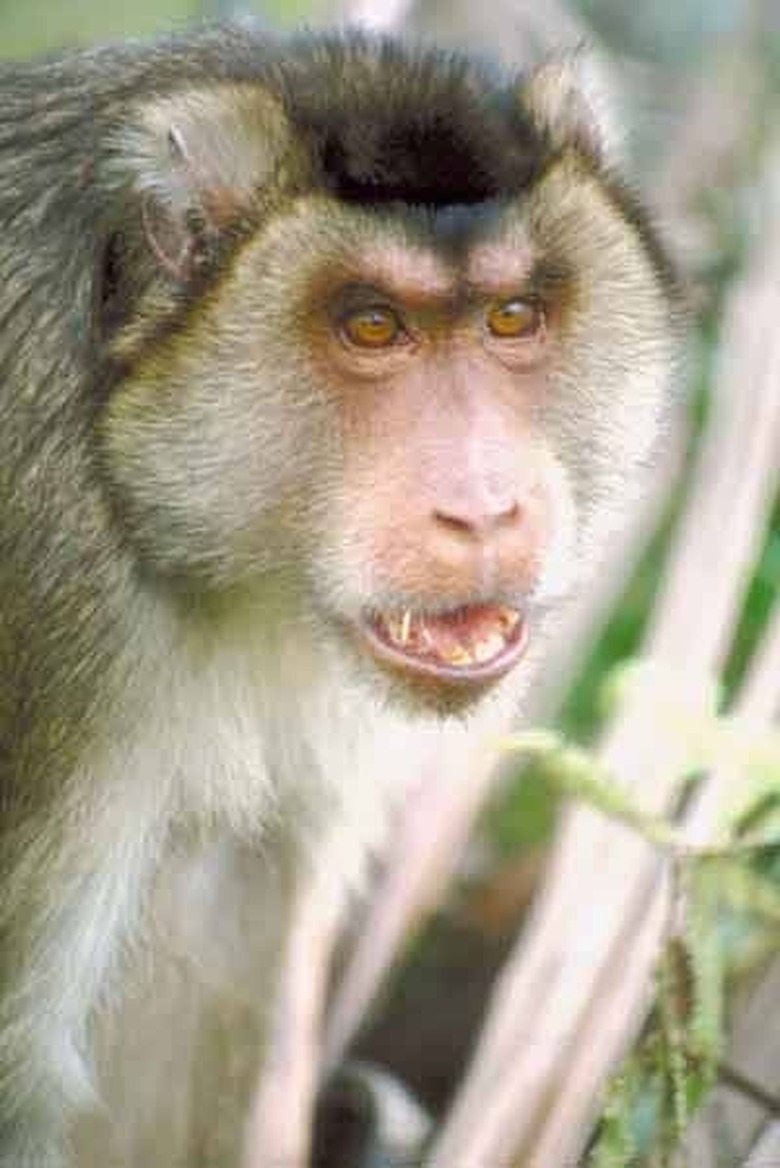How Fast Does A Monkey Run?
Locomotion
Locomotion
The word used to describe a monkey's movement is "locomotion." And while they are not as fast as bullet trains, most monkeys are capable of moving at remarkably high speeds.
Evolution
Evolution
There are approximately 130 species of monkeys. The species can be very different from one another physically, based on what field researchers call, "variations caused by selection." This means they adapt in their outward appearance and body type, according to their capabilities. Differences may be reflected in their color, their looks or the ways they move.
Movement Style
Movement Style
All monkeys and great apes are primates. There are four basic types of locomotion for primates: quadrupedal–walking on all fours; bipedal–walking on two feet; vertical clinging and leaping; and brachiation–using arms to propel through trees.
A primate chiefly uses one of the four types but may use all at one time or another. The kind of locomotion each uses indicates its lifestyle. For example, Verreaux sifakas are vertical clingers and leapers–they can leap distances up to 33 feet. While macaque monkeys use all four limbs and flat palms in order to climb or walk and are primarily ground-dwelling. The speeds at which these two species of monkeys move are quite different.
A langur can run along slender branches and race from the bottom to the top of a 100-foot tree in a few seconds versus the baboon, who is clumsy in trees and cannot leap distances. Why so different? Predators.
For arboreal monkeys (the ones who commonly live in tree tops) predators are mostly snakes, carnivores and birds of prey. They are fast leapers but mainly use their skill to cover areas for finding food.
Since the baboon stays on the ground, he is stout and has powerful canines. His enemies include lions, jackals and hyenas, and he is slower but fiercer. Baboons will try to bluff opponents by showing their huge fang teeth. As you can imagine, these species operate at very different speeds.
Handy Hands
Handy Hands
Locomotion and speed are also closely related to grasp. Small, slow prosimians, who are the size of mice, have strange pads or claw hands because they dig them into trees for food. They practically mope along.
In contrast are the guenons, which spend a great deal of time in the low-level forest. They have dexterous hands and move by leaping into dense foliage. A guenon can move as fast as man can run on ground.
The Winner
The Winner
Among the species, the title of fastest goes to patas monkeys. The patas are large monkeys (a male can weigh up to 27 pounds) with long, slender limbs. Patas monkeys have been clocked at up to 34 miles per hour (55 kilometers per hour). For comparison: the world's fastest dog, the greyhound, runs about 45 miles per hour and thoroughbred racehorses typically run at speeds up to 40 miles per hour.
Cite This Article
MLA
Campbell, Andrea. "How Fast Does A Monkey Run?" sciencing.com, https://www.sciencing.com/how-fast-does-monkey-run-4572138/. 22 November 2019.
APA
Campbell, Andrea. (2019, November 22). How Fast Does A Monkey Run?. sciencing.com. Retrieved from https://www.sciencing.com/how-fast-does-monkey-run-4572138/
Chicago
Campbell, Andrea. How Fast Does A Monkey Run? last modified March 24, 2022. https://www.sciencing.com/how-fast-does-monkey-run-4572138/




